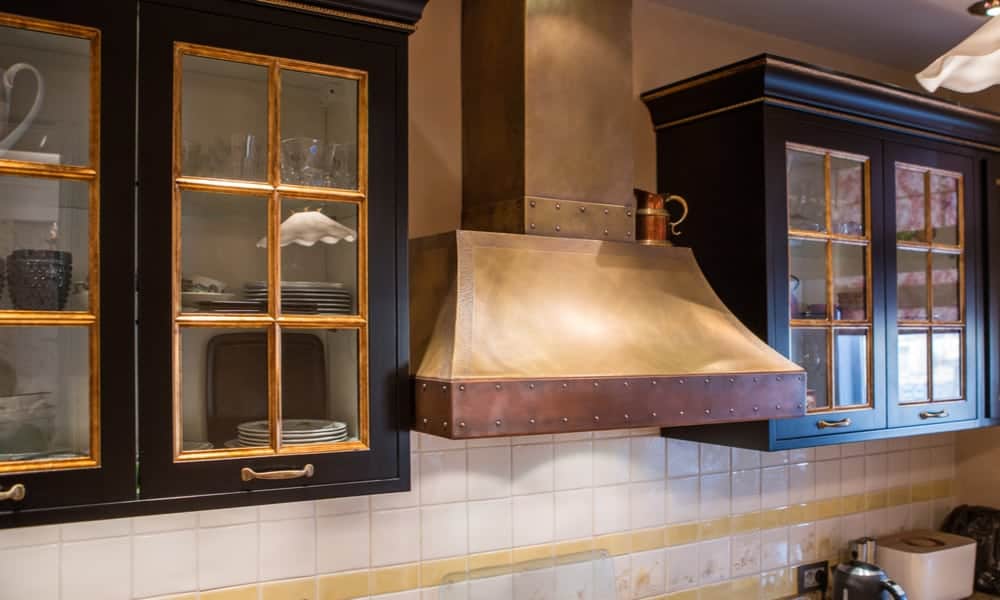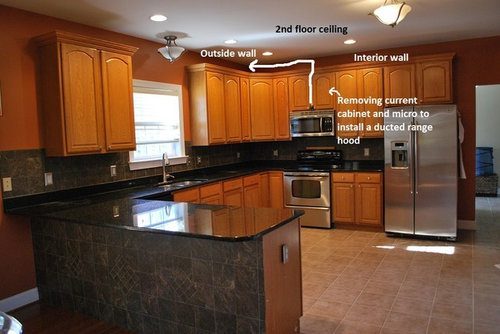You’ve just moved into your first home and are ready to start cooking all of your meals from scratch. But there’s one problem – you can’t figure out how to vent a range hood on an interior wall. Don’t worry, we’re here to help.
Here are a few tips on how to vent a range hood on an interior wall:
First, you need to determine the best location for the vent. This will depend on a few factors, such as the layout of your kitchen and the location of the nearest exterior wall.
Once you’ve determined the best location, mark the spot where you will be cutting the hole for the vent.
Next, use a drill to create holes for the screws that will hold the vent in place. Once the holes are drilled, insert screws into each hole and tighten them until they are snug.
Now it’s time to cut the hole for the actual vent. Use a saw or other cutting tool to make a hole that is slightly smaller than the diameter of the vent pipe. You want there to be a tight fit so that no air can escape through gaps aroundthe pipe.
Once the hole is cut, insertthe vent pipe through it and secure it in place with clamps or tape. Finally, turn on your range hood and test it out!
- First, you will need to determine where you want to vent the range hood
- Next, you will need to measure the area where you want to vent the range hood
- Once you have measured the area, you will need to cut a hole in the wall for the venting process
- After you have cut the hole in the wall, you will need to install the range hood vent kit
- Finally, once the range hood vent kit is installed, you will need to turn on the fan and test it out to make sure that it is working properly
Kitchen Rangehood Ventilation Solutions
Does a Range Hood Have to Be Vented Outside?
A range hood is a device that is installed above your stove in order to remove smoke, steam, and odors from the air. Most range hoods are vented to the outside of your home, but there are some that are not. Non-vented range hoods simply recirculate the air back into your kitchen.
So, does a range hood have to be vented outside?
The answer is no, a range hood does not have to be vented outside. However, it is generally recommended that you vent your range hood to the outside of your home.
Venting to the outside will help remove smoke, steam, and odors from your kitchen more effectively than recirculating the air back into your kitchen will.
Can a Range Hood Be Vented Through a Side Wall?
A range hood can be vented through a side wall if the distance from the centerline of the range hood to the outside edge of the house is less than 3 feet. If the distance is greater than 3 feet, the range hood must be vented through the roof.
How Do You Duct a Range Hood for a Wall?
If you’re looking to duct your range hood for a wall, there are a few things you’ll need to take into consideration. First, you’ll need to determine the size of the range hood and the type of venting system you have. Then, you’ll need to install an exhaust fan in the wall near the range hood.
Finally, you’ll need to connect the ductwork from the fan to the hood. Follow these steps and you’ll have your range hood vented in no time!
How Do You Install a Wall Mounted Range Hood?
Installing a wall mounted range hood is not as difficult as it may seem. In fact, most home improvement stores sell kits that include everything you need to complete the project. However, if you don’t feel comfortable installing the range hood yourself, there’s no shame in hiring a professional.
Here are the basic steps involved in installing a wall mounted range hood:
1. Choose the location for your range hood. It’s important to choose a spot that will allow the exhaust duct to be properly vented to the outside of your home.
2. Use a stud finder to locate the studs in your chosen location. Then, use a drill to create pilot holes for your screws.
3. Affix the mounting bracket to the wall using screws and washers (included in your kit).
Make sure that the bracket is level before moving on.
4. Suspend the range hood from the mounting bracket using chains or cables (again, included in your kit). Adjust the length of these so that the bottom of the range hood hangs about 18 inches above your stovetop.
5. Use metal tape (included) or another type of strong adhesive to seal all joints between sections of exhaust ductwork. This will help ensure that fumes are properly vented outside and not into your home.


Credit: www.sunrisespecialty.com
Range Hood Venting Options
There are many options available when it comes to venting your range hood. The three most common methods are ducted, recirculating, and downdraft. Here is a detailed look at each option:
Ducted: Ducting your range hood is the most effective way to remove smoke and odors from your kitchen. It works by pulling air through the hood and exhausting it outside of your home. This method requires some basic installation, but it is well worth it for the improved air quality in your kitchen.
Recirculating: Recirculating range hoods work similarly to ducted hoods, but they don’t exhaust air outside of your home. Instead, they recirculate the air back into your kitchen. This can be a good option if you don’t want to deal with installation or if you live in an apartment where exterior ventilation isn’t possible.
However, recirculating range hoods aren’t as effective as ducted models at removing smoke and odors from your kitchen.
Downdraft: Downdraft range hoods are designed to be installed directly into your countertop or cooktop. They work by drawing air down through the unit and exhausting it outside of your home (or sometimes back into the room).
Downdraft range hoods are a good option if you have limited space in your kitchen or if you want a sleek, unobtrusive design. However, they aren’t as effective as other types of range hoods at removing smoke and odors from your kitchen.
Installing Range Hood Horizontal Vent Duct
Installing a range hood horizontal vent duct is not as difficult as it may seem. In fact, with the right tools and a little bit of know-how, anyone can do it! Here’s what you’ll need to get the job done:
-A drill
-A screwdriver
-A level
-Measuring tape
-An adjustable wrench
-A hacksaw
First things first, you’ll need to measure the space where you’ll be installing the vent duct. This will ensure that you buy the correct size for your range hood. Once you have your measurement, mark out the area on the wall where you’ll be drilling holes for the screws.
It’s important to use a level when marking out the area, so that your vent duct is installed correctly.
Now it’s time to start drilling! Using a drill bit that is slightly smaller than your screws, create pilot holes in each of your marked areas.
Once all of your pilot holes are drilled, insert your screws into each one and tighten them using an adjustable wrench. Be careful not to overtighten the screws, as this could strip them or damage the surrounding wall material.
The next step is to attach your vent duct to the range hood itself.
Most models will come with instructions on how to do this, so simply follow those directions. If there are no instructions available, it’s usually a pretty simple process – just line up the two pieces and use screws or brackets to secure them together.
Finally, you’ll need to cut a hole in your chosen location for the exhaust port of your range hood horizontal vent duct . Measure twice and cut once here – you want to make sure that the hole is big enough for exhaust fumes to pass through easily but not so large that it compromises energy efficiency . Use a hacksawto carefully cut through drywall or other materials until you’ve created an opening that meets these requirements . And that’s it – you’ve successfully installed your range hood horizontal vent duct !
Vent Range Hood Through Wall Or Roof
Are you considering installing a vent range hood through your wall or roof, but are unsure of which option is best for you? Here is some detailed information to help you make your decision:
Installing a vent range hood through your wall will require cutting a hole in the exterior wall of your home.
This option is typically more expensive and time-consuming than installing through the roof. However, it can be the best choice if your range hood needs to be vented horizontally (away from the house), or if you do not want to drill any holes in your roof.
Installing a vent range hood through your roof is less expensive and quicker than installing through the wall.
It also allows you to vent the range hood vertically (up and out), which can be helpful if you have limited space on your exterior walls. Keep in mind that this option does require drilling holes in your roof, so it’s important to hire a professional contractor who can properly seal the vents to prevent leaks.
Conclusion
If you’re looking to vent a range hood on an interior wall, there are a few things you’ll need to take into account. First, you’ll need to make sure that the wall is strong enough to support the weight of the range hood. Second, you’ll need to determine the best way to route the ductwork.
And third, you’ll need to install a proper exhaust fan. We’ll go over all of this in more detail below.

